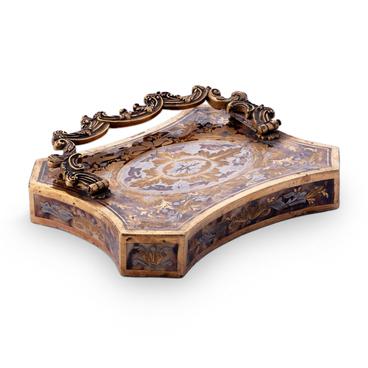This vase with medallions was most likely part of the Eastern art collection of General Paul Georg Edler von Rennenkampf. Having contributed to the suppression of the Boxer Rebellion in China in 1900–1901, he became known both in the Russian Empire and abroad. In China, Paul von Rennenkampf acquired a large collection of religious and household items, some of which were later donated to the Taganrog Museum Group.
The vase was produced in China during the late Qing Dynasty (in the late 19th — early 20th century). For this vase, the craftsman used brass and multi-colored cloisonné enamel. The manufacturing process required exceptional skills. First, a copper base was created, which determined the shape of the final product, whether it would be a vase, box, or figurine. Next, patterns were applied to the surface using copper wire that could be thinner than a human hair.
After the patterns were completed, the resulting compartments (known as cloisons) were filled with colored enamel. Then, the object was fired in a kiln at a temperature between 800 and 900 °C. To make the product more durable, it was fired several times. After cooling, it was polished. Sometimes, individual parts were coated with gold or silver to achieve a unique appearance. The cloisonné enamel technique was also used to decorate various interior items, such as room dividers, chairs, ashtrays, lamps, bottles, and tea sets.


